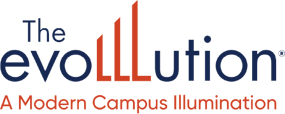Published on
Creating a Purpose-Driven Strategy for Microcredential Partnerships
Erica Noll-Crawford | Program Manager of Microcredentials, Miami University Regionals
Laura Pedrick | Executive Director of UWM Online, University of Wisconsin—Milwaukee

Imagine this: You have recently been tapped to develop new, innovative programs at your institution. One day, your boss bursts into your office, excited about a new report about strengthening business partnerships. She is convinced that microcredentials are the perfect avenue to build these relationships. Tasked with forging new collaborations with local employers for a microcredential initiative, you are left wondering: What’s the next step?
Scenarios like this one are all too familiar for those working in continuing education or innovation divisions within higher education. Developing microcredentials that meet learners’ career aspirations and address employers’ talent needs is already challenging. Adding tight timelines, limited guidance, complex institutional structures and policies, and scarce resources only intensifies the difficulty. Many higher education leaders find themselves pursuing business collaborations without a clear roadmap.
The Microcredential Partnerships with Purpose tool was presented at the 2024 UPCEA/AACRAO Convergence Conference with this need in mind. The tool can help institutions identify and assess various employer and community-based partnership types and opportunities and align them with institutional goals for microcredentialing. With its step-by-step process, the tool guides microcredential partnership designers in reviewing existing partnerships and developing new partnerships that have the highest potential for impact and growth.
Using the Tool
The tool has six phases that walk partnership designers through a partnership inventory, data analysis, review against existing institutional strengths, determination of desired goals and potential for impact and growth. The final phase allows for a consideration of partnership opportunities that may hold promise in the future. Importantly, these phases do not need to occur sequentially; they may overlap, or you may revisit earlier phases as new insights arise. However, starting with phase 1 is recommended.
Phase 1 begins with an inventory of existing institutional partnerships. The tool provides questions you can ask to explore the nature of these partnerships and identify colleagues who may have insight or involvement. The intention of phase 1 is to surface partnership possibilities that may already have a runway for further development and to identify those that the institution may wish to avoid or postpone.
This is a crucial step, as our authors have learned from personal experience. A thorough inventory can prevent miscommunication and duplication of efforts across the institution. For example, several departments might unknowingly engage with the same employer, leading to fragmented messaging and frustration for multiple parties. An existing partnership can be a great foundation for a new microcredential collaboration, but success requires a coordinated effort, clear communication and thoughtful timing.
After phase 1, you can move through the additional phases described in the tool to leverage insights and data to ensure there will be value to learners who complete microcredentials as well as to employers or the community, to analyze alignment with existing institutional strengths and to plot potential microcredential partnerships on a continuum from avoidance zone to target zone to determine their potential impact and growth. For example, an avoidance zone partnership could be an employer request to create a microcredential on a topic the institution’s program array doesn’t already address. On the opposite end of the spectrum, creating a microcredential in partnership with an industry sector partnership, such as a coalition of regional technology employers, can amplify a partnership’s power, as it would meet needs for multiple employers.
It is important to recognize that the desired state (phase 4) may vary significantly across institutions. For some, the priority might be developing programs and partnerships that attract new students and drive enrollment growth. Others may focus on staying at the forefront of emerging labor market trends or addressing specific community needs. In many cases, unwritten or implicit expectations shape these desired states, which can create ambiguity. We encourage you to use this tool to clarify and align expectations, ensuring all stakeholders have a shared understanding of the institution’s goals and priorities.
From here, you can begin the process of plotting partnerships along the partnerships with purpose spectrum to identify institutional alignment and possible impact. Possibilities can land in the target zone, identifying opportunities that may have high impact, align well and include existing relationships that can be leveraged. The spectrum’s consideration zone is for partnerships that may require more work to ensure high alignment and solid impact or that may need a partnership to be further developed before acting. Finally, the avoidance zone identifies opportunities that may require more time or resources to develop, have low institutional alignment or do not meet the institution’s current priorities.
However, we encourage individuals to remember that this tool provides a spectrum—and not discrete stages—for a reason. Opportunities can shift across the spectrum as labor markets change, new institutional leadership takes over or new employer relationships develop. Thus, in phase 6, you are encouraged to continually analyze which partnerships can be positioned to move up or down the continuum and under what conditions.
The tool also shares a set of reflective questions to help shape an institution’s comprehensive microcredential partnership strategy over time. Given learners’ increasing interest and employers’ need for specific areas of talent development, ongoing attention to existing partnerships and changing labor market needs will be essential to ensure partnerships remain relevant.
Conclusion
The Microcredential Partnerships with Purpose tool is just one of many resources that will be developed through HLC’s Credential Lab and its forthcoming Innovation Center. It is important to note that the tool is not static. As microcredential initiatives evolve, so too will this tool, incorporating new insights, employer needs and opportunities for higher education.
By embracing and adapting tools such as this one, institutions can forge meaningful partnerships that advance education and workforce alignment, driving success for learners, employers and communities alike.



